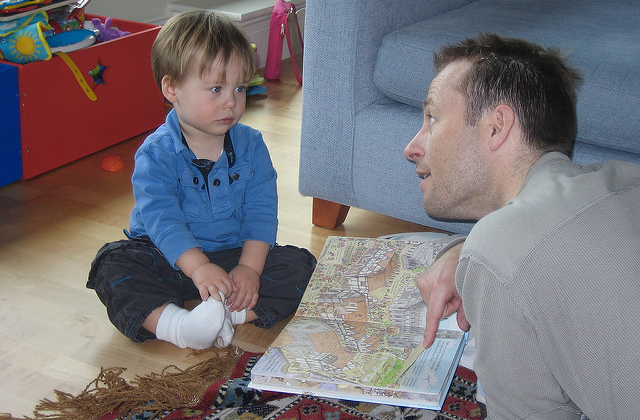Rationale: Giving your child the opportunity to communicate may require you to wait a little, even when you know what he wants.
Wait for the cue from your child before responding. Notice a reach, eye contact, vocalization, or other body movements or gestures. These cues can be subtle at first, so be alert your child’s communication attempts and respond quickly and consistently to prevent frustration. An immediate response tells your child that his nonverbal communication has meaning, and he can use it to get what he wants.
 Read more:
Read more:
Communicating with gestures and signs

Watch this video:
Tempting your child to communicate
I know I am waiting and watching when I:
- Wait for a small gesture, brief eye contact or vocalization to respond, even if I know what my child wants.
- Minimizing my child’s frustration by being alert and responding to even very subtle cues at first.
- Problem-solving to minimize your child’s frustration; provide opportunity for nonverbal communication before a meltdown.
Back to Module 3 Step 3: Create lots of practice opportunities
The content of these pages are adapted from: An early start for your child with Autism: Using everyday activities to help kids connect, communicate and learn. Rogers, S.J., Dawson, G., Vismara, L.A. (2012). New York: Guilford Press.

